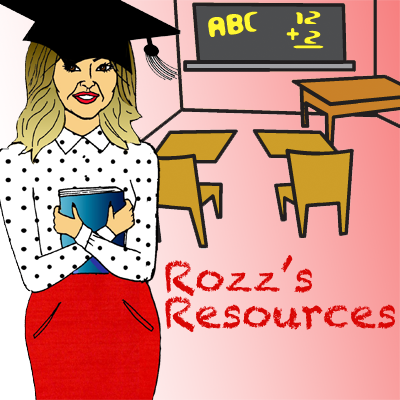Using Similes in Creative Writing in the Classroom
Grammar and creative writing? They sound wrong together. Some people think that creative writing is all about the flow, the emotion, the themes and they forget about their grammar. They are right in one way. Good writing does stir and emotion and gets the reader asking questions but if the grammar is not of a standard, the message of the story or poem can be lost.
I want to look at the use of simile in grammar and writing. A good writer will use figurative language well. Whenever you describe something by comparing it with something else, you are using figurative language. Similes and metaphors are examples of figurative language.
Why do good writers use similes? It makes the poem or story more interesting, it is like comparing a piece of writing to food. If the cook did not add spice or different types of ingredients, the meal would turn out bland. Adding similes makes the reading more flavoursome and interesting!
 Often, writers use similes to be funny. I have detailed an example of Kevin Barry and his use of similes to make the reader laugh below.
Often, writers use similes to be funny. I have detailed an example of Kevin Barry and his use of similes to make the reader laugh below.
Writers use similes to express a feeling in a few short words. According to the Purdue Online Writing Lab, metaphors and similes “give maximum meaning with a minimum of words.” A writer might say that “They felt like a battery about to run out”. The reader can infer so much from this simple statement. If the writer did not use a simile, it might take many sentences to describe this one feeling of sluggishness or tiredness.
Writers use similes to make the reader do some work, the reader might have to use their imagination. Robert Burns, the poet used the following simile in his poem “O my Luve is like the melody/That’s sweetly played in tune.” This can be interpreted in many ways. That is what makes poetry and fiction so interesting. Different readers can come up with different interpretations.
I spoke about Kevin Barry and his use of similes to evoke humour, he is one of my absolute favourite writers and he uses figurative language to hilarious effect in many of his stories, including “Wifey Redux” where describes his daughter as “A perfect, placid child, and mantelpiece-pretty.” Mantelpiece-pretty is a brilliant form of a metaphor and perfectly brings up an image for the reader.
Another favourite of mine is Raymond Carver, he uses figurative language in a simple but hugely effective way. In his story “A small, good thing”, the bread the characters are sharing is described as being “like daylight under the fluorescent trays of light.”
I could go on but if you read anything in fiction or poetry, you will notice constant uses of figurative language. In terms of grammar, one example of figurative language is a simile. A simile is a comparison between two different things. It uses the word like or as.
Look at this sentence. The boy slept on the soft blanket. It was yellow. His room was very dark. He rolled onto something sharp. Look at the words in bold and think of other words that remind you of these things. For example, soft reminds me of cotton, wool or a feather. Sharp reminds me of a knife, a sword or a needle. To write a simile, use this knowledge like so. The blanket was as soft as a feather. The object was as sharp as a needle.
Helping children to understand that writing that contains similes allows the reader to make a picture in their mind and this helps them to understand better. When you are reading text, bring the children’s attention towards use of simile if it comes up. This helps them connect with the text as a reader and a writer.
I have developed a lesson plan and resources such as simile flashcards for group work, simile worksheets and a seasonal poem template activity sheet for the teacher to use with 3rd-6th Class. It is available on mash.ie in my shop at http://mash.ie/product/similes-and-seasonal-poetry-writing-lesson-pack-3rd-6th-class/ and it is on sale for €1 for the next two weeks, it is usually priced at €2.50.


One Response
Rhonda Smith liked this on Facebook.